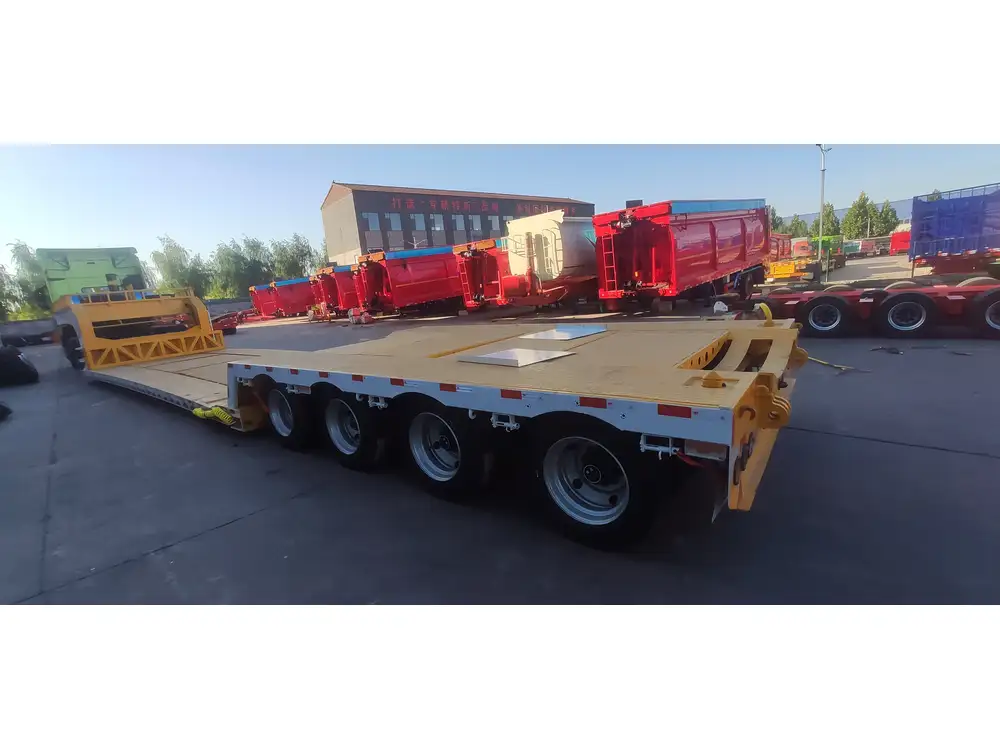When it comes to flatbed trailers, understanding the proper placement of the license plate is crucial for compliance with legal regulations and ensuring road safety. This article delves into the essential factors, regulations, and best practices for mounting a license plate on flatbed trailers.
Understanding Legal Requirements for License Plate Placement
Federal and State Regulations
Federal Regulations:
- Under the Federal Motor Carrier Safety Administration (FMCSA), all commercial motor vehicles, including flatbed trailers, must carry a valid license plate. The federal guidelines do not dictate the exact placement of the license plate, but they do specify that it must be displayed in a manner that is easily visible.
State Regulations:
- Each state has its specific regulations regarding license plate placement. It is essential to consult your state’s Department of Motor Vehicles (DMV) for accurate information. Common state requirements include:
- License plates must be affixed to the rear of the trailer.
- The plate should be no more than a specific height from the ground (often between 12 to 24 inches).
- The plate must not be obstructed by cargo, structural elements, or any accessories.
- Each state has its specific regulations regarding license plate placement. It is essential to consult your state’s Department of Motor Vehicles (DMV) for accurate information. Common state requirements include:

Common Placement Options
| Placement Option | Description | Pros | Cons |
|---|---|---|---|
| Rear Bumper Mounting | Affixing the plate to the trailer’s rear bumper. | Easily visible, protected from debris. | May be obstructed if loads are too high. |
| Side Mounting | Attaching the plate on the side of the trailer. | Makes it visible from a sideways angle. | Not compliant in all states. |
| Dedicated Holder | Using a designated holder or bracket designed specifically for holding a license plate. | Enhanced durability and protection from damage. | Extra installation may be needed. |
| Lighted License Plate Frame | Installing a frame that illuminates the license plate, ensuring visibility at night. | Increased visibility at night, complying with lighting laws. | Higher cost and potential for damage. |
Best Practices for Mounting Your License Plate
Proper Tools and Materials
Ensure you have the right tools and equipment at your disposal before beginning the installation:
Materials:
- License plate
- Mounting bracket or holder
- Screw kit (usually provided with the bracket)
Tools:
- Drill with the appropriate bit for metal
- Wrench or socket set
- Level
- Measuring tape

Step-by-Step Installation Process
Select the Location:
- Choose a location that adheres to state guidelines. The rear of the trailer is typically optimal.
Measure and Mark:
- Use a measuring tape to ensure the plate will be installed at an appropriate height. Mark the drilling points with a marker.
Drill Holes:
- Drill pilot holes at the marked points. Ensure that you drill straight and avoid any underlying wires or components.
Attach the Bracket:
- Use screws to attach the mounting bracket to the trailer. Confirm it is secure and level.
Affix the License Plate:
- Attach the license plate securely to the mounting bracket. Use anti-theft screws if available.
Final Checks:
- Ensure the license plate is clearly visible and adjust if necessary. Perform a quick inspection to verify compliance with state laws.
Additional Factors to Consider
Visibility and Legibility
For the license plate to serve its purpose effectively, it must be:
Clean and Unobstructed:
- Regularly clean the license plate to remove dirt, grime, and any cargo-related debris.
Properly Lit:
- In low-light conditions, consider additional lighting or reflective tape to enhance visibility.

Compliance with Additional Accessories
If your flatbed trailer is outfitted with accessories such as toolboxes, ladders, or racks, ensure these do not impede the visibility of the license plate.
Insurance Considerations
Having the correct license plate placement not only complies with road safety laws but also affects any claims related to accidents, damages, or violations. An unnoticeable license plate could lead to complications in insurance claims, potentially costing you more in the long run.
FAQ: Common Questions About License Plate Placement

Q1: What if I have custom modifications on my flatbed trailer?
A1: If your flatbed has been modified, ensure the license plate remains visible and adheres to state regulations. Custom fittings that obscure the plate should be modified or removed.
Q2: Can I use a temporary plate on my flatbed trailer?
A2: Temporary plates can be utilized under specific conditions. Ensure all dimensions and visibility requirements comply with your local regulations.
Q3: Are there specific mounting brackets I should use?
A3: Using a universal mounting bracket is common; however, brands may offer model-specific ones tailored to enhance durability and protection against the elements.

Q4: Do I need to place my trailer license plate in a specific orientation?
A4: Most states mandate that the plate be displayed in a horizontal orientation. Verify your state’s requirements for any deviations.
Conclusion: Ensuring Compliance and Safety
Placing your license plate correctly on a flatbed trailer is not only a matter of legal compliance; it also enhances road safety for you and those around you. By understanding regulatory requirements and following best practices, you can avoid potential fines and ensure that your vehicle remains roadworthy.
By adhering to the guidelines presented in this article, you are well-equipped to mount your license plate correctly, keeping both legality and safety in your corner. Be proactive in maintaining visibility and compliance, and invest in protective measures to safeguard your plate against wear and damage.



